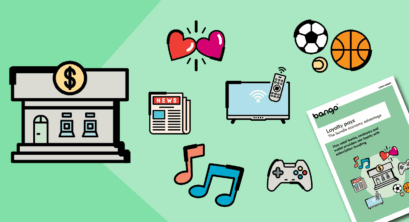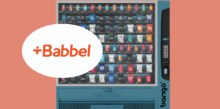Banking on content: the rise of indirect subscriptions
by Aurélien Dur | 23 Oct 2025

Differentiating your brand to cut churn and boost growth
Modern life is lived online, using applications, services and content from thousands of providers. Many are rented rather than bought, as recurring subscriptions. And for the organizations they trust – like banks – that’s an opportunity.
The average citizen spends US$924 each year on subscriptions – and the market’s growing at 20%. But many are feeling fatigued by the steady stream of small monthly charges. In the US, consumers manage an average of 5.4 active subscriptions, while heavy subscribers – those with Prime, Netflix, YouTube Premium, and multiple “plus” services such as Disney+ and Apple TV+ – often juggle a dozen or more. That’s why nearly half (49%) are annoyed by not being able to see them all in one place and 57% have cancelled a subscription after a surprise price hike.
That’s where indirect subscriptions come in. Subscription content delivered by the same providers but brought together in one “bundle” by a third party such as banks, utilities and telcos. It’s giving these partners new ways to differentiate their offers and reduce customer churn – by offering easy access to content, for a single monthly debit.
Drawing on insights from the latest Bango report – Loyalty pays – we explore how this fast-evolving ecosystem is creating powerful new opportunities for customer acquisition and retention in the financial sector.
Building long-term loyalty, with compelling content
At first glance a bank seems like a strange place to get your “flix fix”. The standard banking brand isn’t about compelling characters or fantastical storytelling. (Who’d buy insurance from a dwarf waving a sword? Not us.) But actually, the finance sector is a perfect match for subscription content – and here’s why.
- The bond of trust between consumer and bank
Banking is central to modern life. It’s how you house, feed and clothe yourself, how you protect and nurture your assets, how you invest for old age. But most of all, it’s a business of trust. You feel confident today’s payment will go through properly, because it’s happened smoothly hundreds of times before.
Yes, behind that smooth user experience lies incredible complexity – legacy systems, convoluted processes and interconnected code. But by dealing with it out of sight, your bank has won your trust and that trust may last a lifetime. So, when it comes to offering subscriptions, the relationship is already there.
- A natural home for indirect subscriptions
Here’s the crux: your bank already offers indirect services. Around the world, strict laws define whether a retail bank can offer investment products, or a building society can offer credit cards. So, behind the scenes these products are offered by different organizations, from pension funds to insurers. That doesn’t affect your experience, because you’re consulting your checking account, your 401(k), your mortgage and student loans all balance through the same app.
Indirect subscriptions work the same way. Despite the disparate backend infrastructure of content providers, end-user devices – from websites to your Smart TV – present those services as a unified menu, with personalized data like watch progress and favorites lists retained for each.
- Enabling multiple subscriptions at a singular price
The value proposition goes further. When you offer indirect subscriptions “under one roof” – as an incentive to switch accounts, to differentiate your bank from competitors, or to build the loyalty that boosts ‘customer lifetime value’ – the consumer gets more than a splashy offer. They get the subscription services they enjoy – including ones they currently subscribe to separately – brought together on a single payment, debited once a month for the lot.
It can result in an incredible leap in value for both consumer and provider. UK neobank named Revolut offers a set that would cost the consumer £4,290 per year if purchased directly from content providers, reducing cost of acquisition and gluing them to the bank for the long term. Making sense for both sides.
- The evolution of subscriptions: the custom bundle
If you’re excited by the potential for your bank, you may also be seeing a potential pitfall. Imagine all competing banks offering the same content subscriptions as incentives: sounds like a race to the bottom, doesn’t it?
But there’s a way to offer your customers a custom selection tailored to their interests – or even to choose that selection themselves. It’s called bundling, and it’s a core part of the Digital Vending Machine® (DVM™) from Bango . (If you pay for a subscription bundle that includes different content providers, there’s a good chance our product is behind the curtain, keeping the experience smooth.)
Imagine you’re a neobank based in New York, serving a customer base of locals under 40. With bundling, you could offer curated digital content that fits their lifestyle – New York news platforms, city event guides, exclusive streaming from local creators, and niche off-Broadway content – all through a single monthly subscription. It’s the kind of personalized offer that makes customers feel truly understood.
And here’s the kicker: as their bank, you already have information about what they’re paying for. Letting you customize a bundle to perfection.
How Bango does it: a separation of person, payment and entitlement
Indirect subscriptions may sound hard – but here’s the secret: you don’t have to build it in-house. With years of experience, Bango operates as your backend technology partner, handling all the customer journeys and relationships that bring different services together in a seamless consumer-friendly experience. (We have over 200 such journeys catalogued, and no, we don’t recommend them as bedtime reading.) Here’s an example:
Let’s say you offer Netflix, YouTube Premium and Spotify as an incentive to open a checking account. Your customer doesn’t pay for YouTube or Spotify, but does have a Netflix subscription. When they take up your offer, they’re walked through the process of consolidating all their existing subscriptions with you – saving money at every turn.
This means all the confusion of that person’s identity, how payments are made and their rights to use each service – called “entitlements” – are under control all the way. Without creating a thousand headaches for your IT department.
The Bango DVM: your indirect subscription hub
Of course, you’ve got to put that bundle together. The Digital Vending Machine (DVM) from Bango is a cloud-based subscription bundling product that lets you create, bundle and manage subscriptions from hundreds of content providers (including most of the big names) and offer as an integrated set of indirect subscriptions. A single bundle to attract and retain customers for your banking services.
Imagine your customers’ delight when they see 12 monthly debits consolidated into one.
In a world where banking services are seen as commodities and all banks look the same, indirect subscriptions are a direct way to build your brand.
Go indirect – and get some direct benefits
That’s why banks and content providers are a natural match: their talent for attracting audiences blended with yours for managing people’s finances. And the Bango DVM is how you make that offer real.
Subscribe to our newsletter
Get the latest subscription bundling news and insights delivered straight to your inbox.



